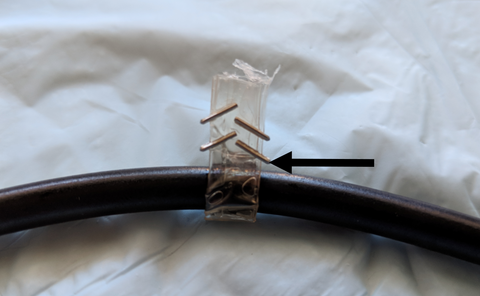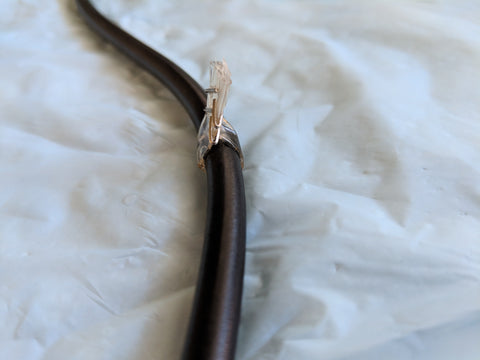Instructions for use: Cellophane banding for portosystemic shunts
These instructions are for application of CelloVet cellophane bands around portosystemic shunts in dogs and cats.
[Updated Oct 2020]
1: CelloVet cellophane for banding congenital liver shunts is provided in a moisture and light resistant bag. The cellophane is supplied non-sterile. Keep out of light and ambient humidity. Only remove cellophane from packaging when you intend to sterilize it for surgery in the immediate future. When stored properly an approximate shelf life of 6+ months is expected.
2: Remove cellophane strip from packaging it was supplied in and place into a single or double wrapped, self sealing surgical pouch.
You may wish to fold or roll the cellophane into 4 layers at this stage to minimize handling during surgery. Our current recommendations are to roll the cellophane instead of folding.
Do not place multiple pieces of cellophane into individual pouches for sterilizing as they may irrevocably stick together. You may wish to wrap the cellophane in a sterilizable, non-stick material such as gauze to prevent it from sticking to the pouch during autoclaving.
3: Sterilize the CelloVet using your preferred means. Follow instructions for each method here.
4: When in surgery, first ensure that your shunt has been isolated and the surgical site is as dry as possible. Make sure you gloves are clean and dry when handling the cellophane. If you haven't already pre-op, roll or fold the cellophane parallel to its fibers and layer (minimum 4 layers) until 3-5 mm wide or to desired width. Recent experience suggests that when clipping together moist cellophane intra-op, rolling of the cellophane may be better than folding when it comes to cut through.
5: Pass the cellophane around the shunting vessel. Bring CelloVet ends into a side-side apposition (image below). Use at least 4 metallic clips in alternating directions to secure free ends (herringbone pattern of application has been suggested by some clients). Do this gently to limit the risk of cut through. Consider using as large a clip size as possible and ensure there is no upward tension at the base (denoted with arrow) of the CelloVet to reduce the risk of cut through. If attenuation of the vessel is required intra-op, we recommend measuring portal pressures to avoid portal hypertension. Attenuation of the shunt may not be required and is at surgeon's discretion.


6: Trim excess cellophane from free ends. Do not lavage excessively.
